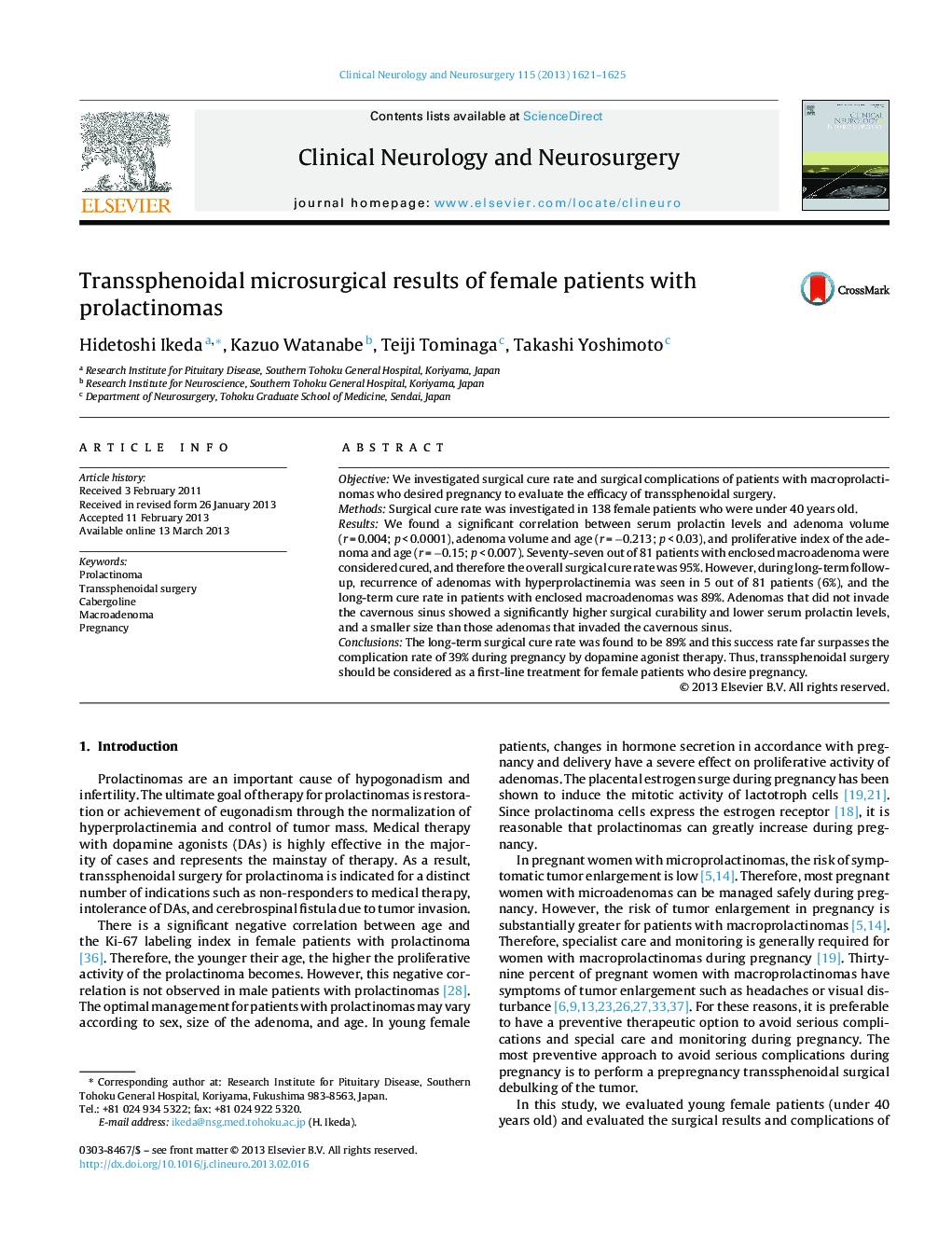| Article ID | Journal | Published Year | Pages | File Type |
|---|---|---|---|---|
| 3040471 | Clinical Neurology and Neurosurgery | 2013 | 5 Pages |
ObjectiveWe investigated surgical cure rate and surgical complications of patients with macroprolactinomas who desired pregnancy to evaluate the efficacy of transsphenoidal surgery.MethodsSurgical cure rate was investigated in 138 female patients who were under 40 years old.ResultsWe found a significant correlation between serum prolactin levels and adenoma volume (r = 0.004; p < 0.0001), adenoma volume and age (r = −0.213; p < 0.03), and proliferative index of the adenoma and age (r = −0.15; p < 0.007). Seventy-seven out of 81 patients with enclosed macroadenoma were considered cured, and therefore the overall surgical cure rate was 95%. However, during long-term follow-up, recurrence of adenomas with hyperprolactinemia was seen in 5 out of 81 patients (6%), and the long-term cure rate in patients with enclosed macroadenomas was 89%. Adenomas that did not invade the cavernous sinus showed a significantly higher surgical curability and lower serum prolactin levels, and a smaller size than those adenomas that invaded the cavernous sinus.ConclusionsThe long-term surgical cure rate was found to be 89% and this success rate far surpasses the complication rate of 39% during pregnancy by dopamine agonist therapy. Thus, transsphenoidal surgery should be considered as a first-line treatment for female patients who desire pregnancy.
